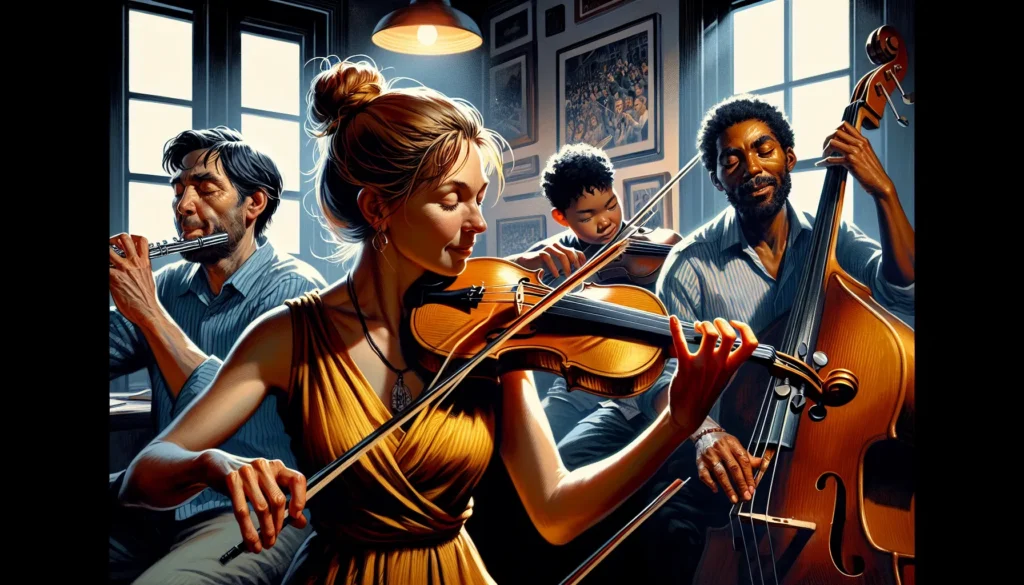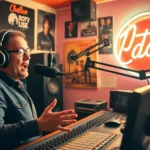Table of Contents
ToggleImagine a world where Beethoven’s symphonies and Mozart’s sonatas are yours to enjoy without the pesky price tag. Welcome to the realm of public domain classical music, where timeless masterpieces are free for anyone to explore and use. It’s like finding a treasure chest overflowing with musical gems, just waiting to be discovered.
In this magical domain, creativity knows no bounds. Whether you’re a budding filmmaker looking for the perfect soundtrack or a passionate musician eager to reinterpret the classics, public domain music offers an endless array of possibilities. So why not dive in? Unleash your inner maestro and let these iconic compositions inspire your next big project. Who knew that classical music could be both enriching and budget-friendly?
What Is Public Domain Classical Music?
Public domain classical music refers to compositions whose copyright has expired, allowing anyone to use these works without restrictions. Composers such as Johann Sebastian Bach and Ludwig van Beethoven created many legendary pieces that now belong to the public domain. These timeless creations serve as a valuable resource for artists, educators, and performers.
Musicians often explore public domain music for its freedom and availability. Accessing these works enables them to arrange, remix, or adapt compositions without worrying about copyright infringement. This legal status further encourages reinterpretation and innovation within the genre.
Film directors and content creators find inspiration in public domain classical music. They can seamlessly incorporate iconic scores into their projects, enhancing storytelling without incurring additional costs. Notable films often feature these powerful compositions, illustrating how public domain music enriches visual narratives.
Educational institutions embrace public domain music as well. Instructors use these pieces to teach students about musical history, composition techniques, and performance practices. Students engage with rich cultural heritage through exploring classics, deepening their understanding of the art form.
Modern technology facilitates access to public domain classical music. Online platforms offer extensive libraries where individuals can find and download recordings for free. This accessibility promotes a wider appreciation for classical music and its impact on various art forms.
Benefits of Public Domain Classical Music
Public domain classical music brings significant advantages to creators and enthusiasts. Its nature fosters creativity and accessibility.
Accessibility for All
Accessing public domain classical music is simple and cost-free. Many iconic compositions are available for anyone to explore, regardless of background or experience. This ease of access encourages wider appreciation of classical works. Libraries, educational institutions, and digital platforms continually offer these treasures to the public. Online resources democratize music, allowing individuals to download and share compositions freely. Familiarity with significant pieces can enhance cultural literacy while inviting exploration of various genres and styles.
Creative Freedom for Artists
Artists enjoy the freedom to interpret and adapt public domain classical music without restrictions. Composers and musicians can arrange, remix, or blend these works into new creations. This flexibility promotes innovation, leading to fresh interpretations and cross-genre collaborations. Filmmakers frequently incorporate these compositions into their projects, enhancing narratives while avoiding licensing fees. The absence of copyright obligations allows for broader experimentation within the music community. Public domain works become a canvas for artistic expression, inspiring performers across various disciplines.
Notable Composers and Works
Public domain classical music encompasses masterpieces from various composers, each contributing uniquely to the genre’s richness. The following sections explore notable figures and their enduring works.
Bach and His Legacy
Johann Sebastian Bach stands as a pillar of classical music. His compositions showcase intricate counterpoint and elaborate harmonies. Works like the “Brandenburg Concertos” and “Goldberg Variations” exemplify his genius. Musicians frequently draw inspiration from Bach, arranging his pieces for modern instruments. His music not only highlights technical skill but also emotional depth, resonating with audiences across generations. Learning from Bach’s methodologies enables contemporary composers to innovate while respecting tradition.
Beethoven’s Timeless Influence
Ludwig van Beethoven revolutionized classical music through his bold approach. Iconic pieces such as “Symphony No. 5” and “Piano Sonata No. 14” have left an indelible mark on the musical landscape. Beethoven’s transition from the Classical to Romantic era inspires countless musicians. His use of dynamic contrasts and emotional introspection invites performers to explore new interpretations. Public domain access to Beethoven’s works encourages experimentation, allowing modern artists to connect with his timeless vision.
Tchaikovsky’s Popular Contributions
Pyotr Ilyich Tchaikovsky remains a favorite among classical music enthusiasts. His ballets, including “Swan Lake” and “The Nutcracker,” feature memorable melodies and vibrant orchestration. Tchaikovsky’s ability to evoke emotion through music speaks directly to the heart. Many performers reinterpret his scores for various genres, expanding his reach beyond classical confines. His rich harmonies and dramatic storytelling continue to enrich cultural experiences, demonstrating the enduring appeal of public domain compositions.
How to Access Public Domain Classical Music
Accessing public domain classical music is straightforward. Various resources offer a plethora of compositions available for anyone.
Online Resources and Libraries
Digital libraries serve as excellent repositories for public domain music. The International Music Score Library Project (IMSLP) provides sheet music for thousands of compositions, allowing easy browsing. Additionally, websites like Project Gutenberg offer free downloadable recordings and sheet music. Many local libraries also house collections of public domain works that patrons can explore. Archives such as the Library of Congress offer valuable compilations and recordings of significant historical pieces. Users find these online platforms indispensable for discovering new works and accessing a wealth of musical heritage.
Recordings and Sheet Music
Quality recordings and sheet music are essential for musicians and enthusiasts. Websites like Musopen feature royalty-free recordings of classical masterpieces, enhancing accessibility for performers. The Archive.org platform also hosts numerous sound recordings in the public domain, fostering easy streaming or downloading options for listeners. Sheet music editions often accompany these recordings, allowing musicians to practice and perform iconic works. Comprehensive resources ensure that aspiring artists can interpret these compositions without legal barriers. This availability empowers creators to delve into their musical journey confidently.
Legal Considerations
Understanding copyright laws is essential when exploring public domain classical music. Copyright protects creators for a set period, after which their works enter the public domain. Generally, works published before 1923 are in the public domain in the United States. Composers like Johann Sebastian Bach and Ludwig van Beethoven fall into this category. Their compositions can be freely used, arranged, and adapted, bypassing legal hurdles.
The importance of public domain cannot be overstated. Public domain works foster creativity by allowing anyone to access and interpret timeless masterpieces. Artists and educators benefit from these resources, contributing to cultural literacy and artistic innovation. Public domain classical music serves as a foundation for new projects, enabling creators to experiment without concerns about licensing fees. Educational institutions leverage public domain music to enrich curricula and engage students with historical and contemporary compositions. Such access promotes artistic expression across various disciplines, invigorating the classical music landscape.
Public domain classical music stands as a testament to the enduring power of creativity and accessibility. It invites artists and enthusiasts alike to explore and reinterpret iconic compositions without the constraints of copyright. This freedom not only enriches artistic expression but also fosters a deeper appreciation for the cultural heritage embedded within these timeless works.
As more resources become available online, the opportunity to engage with these masterpieces continues to grow. Whether for educational purposes or creative projects, public domain music serves as a vital source of inspiration for musicians, filmmakers, and educators. Embracing these compositions opens doors to innovation and collaboration, ensuring that the legacy of classical music thrives in the modern world.





